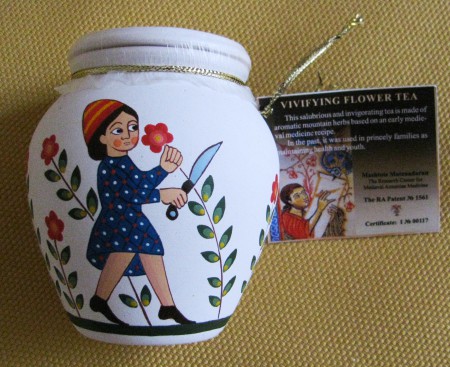- Nutrition and culture in professional football: A mixed method approach. Footballers need a more diverse diet. Well, kinda. I just wanted to get this paper in here because wouldn’t it be cool if we could get Lionel Messi to talk about agrobiodiversity-rich diets?
- Diversity analysis using ISSR markers for resistance to shoot pests in sorghum. There may be a diversity of resistance mechanisms.
- Domestication of Alpine blue-sow-thistle (Cicerbita alpina (L.) Wallr.): six year trial results. I know. Why would you want to, right? Takes all sorts to make a diverse diet, I guess. Maybe we can get Lionel Messi to eat it?
- Improving representativeness of genebank collections through species distribution models, gap analysis and ecogeographical maps. Fancy GIS-based prioritization results in more, better germplasm collecting. Nice to have the data.
- Evolutionary Plant Breeding in Cereals—Into a New Era. Martin Wolfe and colleagues lay it on the line; why it is a good idea, and what the obstacles are.
- Genetic interactions influence host preference and performance in a plant-insect system. Aphids and barleys have genetic preferences for one another.
- Pasture area and landscape heterogeneity are key determinants of bird diversity in intensively managed farmland. As in the northern hemisphere, so too in Argentina.
- Tree diversity and conservation value of Ngovayang’s lowland forests, Cameroon. Both high, and I’m betting some economically important trees are among them.
Protecting Armenian vivifying tea
The Mesrop Mashtots Institute of Ancient Manuscripts, commonly referred to as the Matenadaran, is well worth visiting in Yerevan. Some of the manuscripts on display are quite stunning. But apparently there’s more to the place than (very) old books. I bought this Vivifying Flower Tea in the gift shop, and the label refers to a Research Center for Medieval Armenian Medicine.
Unfortunately, there’s nothing online about this research center, but there’s clearly a lot of work around on Medieval Armenian medicine, and the role of plants in it. It’s interesting that the concoction I bought is actually protected by a patent (see the label). That’s a different route to the one taken by India, for example. The tea was in fact pretty good, if a bit expensive, though not, if I am honest, especially vivifying. I wonder if any of takings from the gift shop filters back into conservation, of either the tea’s constituent plants or the manuscripts which hold the secret of its manufacture. I suspect not.
Nibbles: Chickens, Millet adoption, Specialty crops, World Food Day, Migrating forests, Vietnamese pheasants, Yews, High prices, Genebank tour, Climate change conference.
- Why did the Chinese chicken cross the road? To get a new date. For domestication, that is.
- The Indian Farmer is actually three, millet-wise.
- USDA wades into specialty crops. Wonder if one of them is baobab, and a factsheet is involved. Or “small scale grains” for that matter.
- “Life in the countryside is hard.” But fear not, FAO is on it.
- Forests are not migrating. Species are actually undergoing range contraction at both ends. Well that’s weird.
- The first pheasant extinction? Say it ain’t so.
- I like pictures of old trees. So sue me.
- Jess stops traffic.
- Tour a cocoa genebank. Could this catch on?
- International Conference on Climate Change and Food Security (ICCCFS). Not hot air.
The pomegranate in Armenia
The pomegranate is everywhere in Armenia. And I don’t mean just in the markets. A famous film is named after the fruit. Tea and wine are made from it. And its image features on everything from church walls to tourist souvenirs. I suppose it goes back to pre-Christian mythology, in which it was a symbol of fertility and abundance — something to do with the belief that each fruit contained exactly 365 seeds, perhaps. Anyway, here’s a compendium of pomegranate iconography from my recent trip. Couldn’t get much information on diversity, I’m afraid, how much there is of it and to what extent it is endangered. Something for the next time.
And where is Luigi now?
Due to overwhelming popular demand, 1 here’s the next instalment of Luigi’s tour of Caucasus genebanks. Below is the site of the Scientific Center of Agrobiotechnology of the Ministry of Agriculture, which houses the Armenian national genebank, and is one of the key stakeholders in the national plant genetic resources programme. It is located in Echmiadzin (Էջմիածին), about a half hour drive to the west of Yerevan. A couple hundred meters north of the institute is the Mother Cathedral of Holy Etchmiadzin, the central cathedral of the Mother See of Holy Etchmiadzin of the Armenian Apostolic Church. The national genebank boasts something like 450 wheat, 300 chickpea and 100 capsicum accessions, among others. The Mother Cathedral of Holy Etchmiadzin boasts three pieces of the True Cross and a bit of Noah’s Ark.
